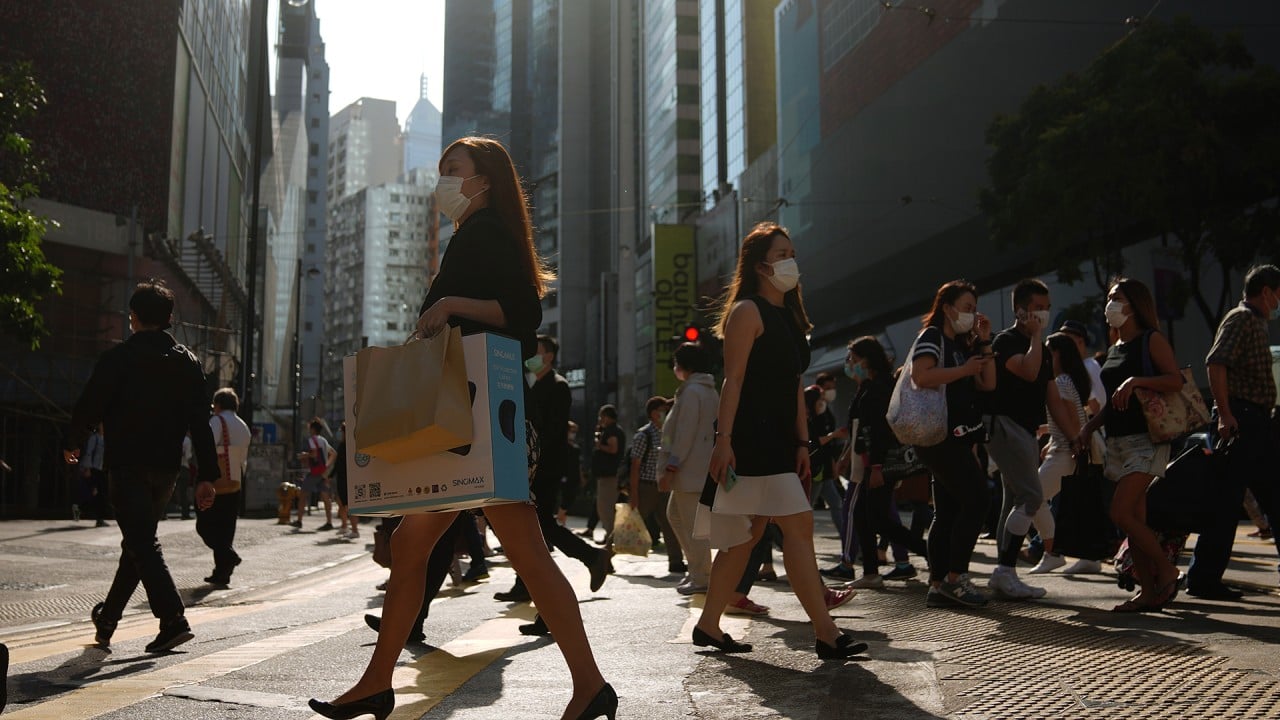Annual rents in Tsim Sha Tsui in Kowloon declined by 39 per cent before the onset of the pandemic – at a time the city had been brought to a standstill by a period of civil unrest that often turned violent – to US$$1,493 per square foot.
Meanwhile rents in Via Montenapoleone in Italy’s fashion capital of Milan surged by 31 per cent to US$1,766 per square foot in the same period, making it the second-most expensive retail strip in the world behind New York’s Fifth Avenue at US$2,000 per square foot, which held on to its title for a second straight year.
In 2021, Tsim Sha Tsui was adjudged the world’s most expensive place for retail rents, edging out Causeway Bay, widely considered the trendiest shopping district on Hong Kong Island. However, the city’s stringent pandemic curbs for three years until the end of 2022 led to a recession caused by a slump in tourist arrivals and retail sales.
Last year, Upper Fifth Avenue in New York took the crown from Hong Kong’s Tsim Sha Tsui as the world’s costliest shopping haven.
“Although hampered by the global economic slowdown, Hong Kong’s high street retail recovery remains resilient, supported by growth potential from its previous low base during Covid-19, while securing three of the top 10 spots in the [Asia-Pacific] prime retail ranking in 2023,” said Kevin Lam, executive director and head of retail services for Hong Kong at Cushman.
Hong Kong’s empty retail space falls to 3-year low as mainland shoppers return
Hong Kong’s empty retail space falls to 3-year low as mainland shoppers return
These changes are likely to be permanent, which could potentially mean that luxury brands have no compelling reason to expand their presence in Hong Kong, Lam said.
In recent months, shops in the city have been leased mostly by local brands and businesses like pharmacies. A full recovery of Hong Kong’s retail rents has also been hobbled by companies’ preference to spend more on social media campaigns rather than take up retail space, according to Cushman.
“In the foreseeable future, the trade mix along high street locations may not be like the good old days,” he said. “This is a concern among global brands when they consider expanding.”
Another reason global brands are slow in taking up more space in Hong Kong is that their shops in mainland China have been performing well since the reopening, Cushman said.
“China has returned to normalcy for some months, so luxury brands could choose to expand in tier-1 locations like Guangzhou, Beijing and Shanghai,” Lam said.
With consumers looking for unique shopping experience, lifestyles and convenience, analysts have observed a trend of mall operators using entertainment features as a way to distinguish their property from others.
“Despite Hong Kong’s tourism and retail industries’ recovery following the border reopening, the government’s data indicates that in the first half of the year overnight and same-day visitor spending on shopping is at just 55 per cent and 18 per cent, respectively, of the level seen in the first half of 2018,” said Rosanna Tang, executive director and head of research for Hong Kong at Cushman.
“This demonstrates that the focus of visitors in Hong Kong has shifted from ‘shop till you drop’ to a greater desire for local culture and experience-based touring.”
The changing retail landscape, the rise of e-commerce, the strengthening Hong Kong dollar, as well as competition from neighbouring Greater Bay Area cities pose challenges for Hong Kong retailers and mall landlords, spurring them to implement “out of the box” retail solutions to remain competitive, she added.
Stay connected with us on social media platform for instant update click here to join our Twitter, & Facebook
We are now on Telegram. Click here to join our channel (@TechiUpdate) and stay updated with the latest Technology headlines.
For all the latest Covid-19 News Click Here

